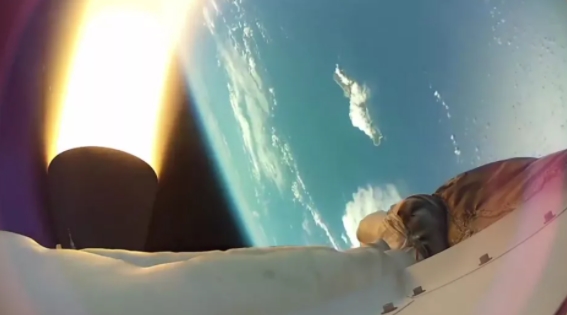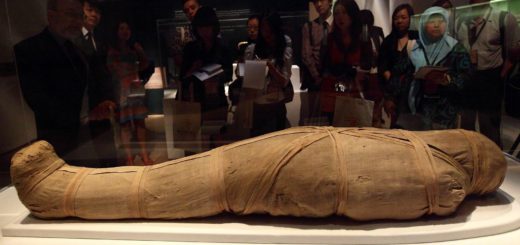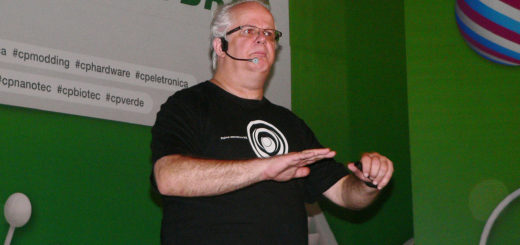Watch NASA’s ‘Flying Saucer’ for Mars Go Supersonic in Amazing Video

An amazing new video from NASA shows the ups and downs of the first test of a flying saucer-shaped system that could one day help the space agency land huge spacecraft on Mars or other planets.
NASA launched the flying saucer test flight from Hawaii at the end of June to demonstrate a so-called Low-Density Supersonic Decelerator (LDSD), an inflatable system to help huge vehicles slow down during offworld landings. NASA’s new flying saucer video, released Friday (Aug. 8), shows stunning, high-definition views of the flight.
For example, viewers can see the instant when the saucer-shaped supersonic inflatable aerodynamic decelerators (SIADs) inflated. The new video also gives a sharp view of the moment the LDSD’s huge 100-foot-wide (30.5 meters) supersonic parachute ripped apart as it deployed when the craft was speeding at 2,500 mph (4,023 km/h). [NASA’s Inflatable Flying Saucer for Mars Landings (Photos)]
The LDSD vehicle’s onboard motor propelled the craft even higher into the sky, taking it up to Mach 4 for the June 2014 test. (Image credit: NASA/JPL-Caltech)
“Our test vehicle performed as advertised,” Ian Clark, principal investigator for LDSD, said in a statement. “The SIAD and ballute, which extracted the parachute, also performed beyond expectations. We also got significant insight into the fundamental physics of parachute inflation. We are literally rewriting the books on high-speed parachute operations, and we are doing it a year ahead of schedule.”
The test was conducted on June 29, when the flying-saucer-shaped vehicle was towed 23 miles (37 kilometers) up to the edge of space by a balloon. Once the balloon released the craft, the LDSD’s onboard motor roared to life, taking the craft up to more than four times the speed of sound and hurtling it even higher into the sky.
After the balloon release, the two SIADs inflated, slowing the LDSD down to Mach 2.5. One SIAD was 20 feet wide (6 m), and the other measured 26 feet (8 m) in diameter. According to analysis done by the LDSD engineers after the test, the SIADs performed very well.
The huge 100-foot-wide (30.5 meters) supersonic parachute ripped almost immediately upon being deployed during the LDSD test.
The huge 100-foot-wide (30.5 meters) supersonic parachute ripped almost immediately upon being deployed during the LDSD test. (Image credit: NASA/JPL-Caltech)
Engineers wanted to test the vehicle in thin air because it functions as a good analog for Mars’ atmosphere, Clark said during a news conference today (Aug. 8). It’s possible that once the new technology is put through its paces, a version of the LDSD could help land human habitats and other large objects on Mars using a set of parachutes and SIADs.
“We’ve been developing a number of technologies as part of this project — technologies that will enable us to land payloads significantly larger than the Curiosity rover, land them in places on Mars that we’ve never been able to get to before and land them more accurately,” Clark said.
Although the parachute didn’t perform as expected, engineers working on the mission still consider the test a success. The chute failure helped engineers with the program learn more about what needs to be corrected during future tests.
The saucer-like Supersonic Inflatable Aerodynamic Decelerators shown in this image deployed well during the June 29 test.
The saucer-like Supersonic Inflatable Aerodynamic Decelerators shown in this image deployed well during the June 29 test. (Image credit: NASA/JPL-Caltech)
“There’s a lot of physics to this problem that we’re now gaining new insights into that we’ve never had before, and we’re learning more about what it takes to build parachutes this size that can be safely deployed at these conditions,” Clark said. “We’re going to take all of that knowledge and feed it back to our flights for next year.”



 Creators of mankind
Creators of mankind Description of “Tall white aliens”
Description of “Tall white aliens” Where they came from?
Where they came from? About hostile civilizations
About hostile civilizations The war for the Earth
The war for the Earth “Tall white aliens” about eternal life
“Tall white aliens” about eternal life Video: “Nordic aliens”
Video: “Nordic aliens” Aliens
Aliens Alien encounters
Alien encounters The aliens base
The aliens base UFO
UFO Technology UFO
Technology UFO Underground civilization
Underground civilization Ancient alien artifacts
Ancient alien artifacts Military and UFO
Military and UFO Mysteries and hypotheses
Mysteries and hypotheses Scientific facts
Scientific facts


















